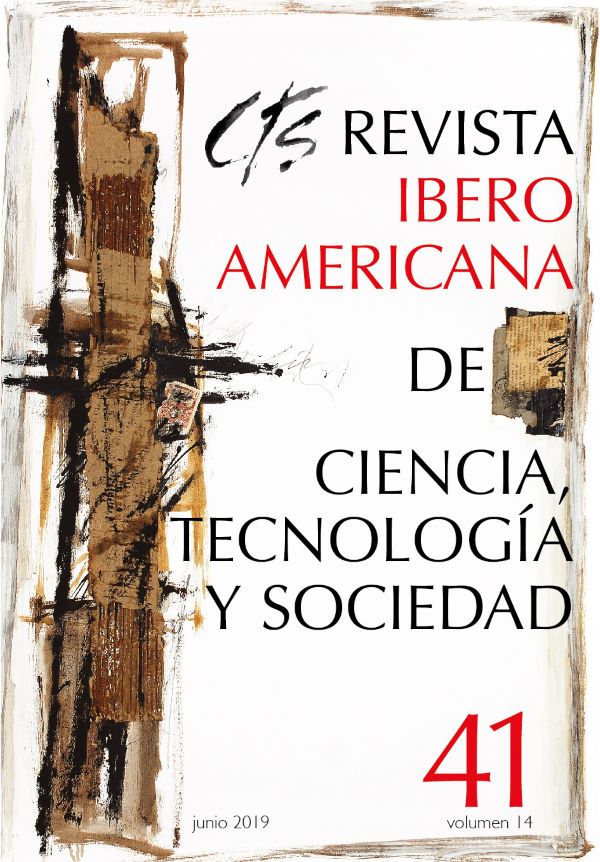Engenharia e preocupação social: rumo a novas práticas
Palavras-chave:
determinismo tecnológico, inovação frugal, ação coletiva, ensino CTS, engenhariaResumo
A partir da constatação de que está ocorrendo uma identificação entre irreversibilidade tecnológica e inevitabilidade tecnológica — isto é, a negação da possibilidade de construir alternativas ao que existe —, este trabalho argumenta que isso não é assim e que tal construção precisa de uma discussão reflexiva de novas práticas no ensino da engenharia. Isso é fundamental para estimular uma preocupação social entre os alunos das áreas científicotécnicas que ajude a enfrentar os desafios da mudança climática, da desigualdade e da deriva antidemocrática na aplicação da informática.Downloads
Referências
ABROL, D. (2014): “Pro-poor Innovation Making, Knowledge Production, and technology Implementation for Rural Areas: Lessons from the Indian Experience”, Innovation in India. Combining Economic Growth with Inclusive Development, Nueva Delhi, Cambridge University Press, pp. 337-378.
ANDERSEN, E. (1995): Feasibility Study in New Awareness Initiatives, Copenhagen, Danish Board Of Technology.
ASIMOV, I. (1974): Los propios dioses, Madrid, Bruguera.
BRYNJOLFSSON, E. y MC AFEE, A. (2014): The Second Machine Age. Work, Progress, and Prosperity in a Time of Brilliant Technologies, Nueva York, Norton and Co.
DAVID, P. (1985) “Clio and the Economics of QWERTY”, The American Economic Review, vol. 75, n° 2, pp. 332-337.
DERTOUZOS, M. L., LESTER, R. K., SOLOW, R. M. y MIT COMMISSION ON INDUSTRIAL PRODUCTIVITY (1989): Made in America: Regaining the Productive Edge, Cambridge, MIT Press.
EHN, P. (1988): Work-Oriented Design of Computer Artifacts, Umea University. Disponible en: https://www.diva-portal.org/smash/get/diva2:580037/FULLTEXT02.pdf. Consultado el 10 de enero de 2019.
GEIDO, D., FAILACHE, H. y SIMINI, F. (2007): “BiliLED fototerapia neonatal de bajo costo: del prototipo a la producción industrial”, Proceedings of the XVI Congreso Argentino de Bioingeniería, V Jornadas de Ingeniería Clínica, San Juan, Argentina. Disponible en: http://www.nib.fmed.edu.uy/bililed_sabi.pdf. Consultado el 21 de abril de 2019.
GERTH, H. y WRIGHT, C. (1991): From Max Weber, Oxford, Routledge.
GUARGA, R. (2012): “Jornada Técnica: La tecnología SIS aplicada al control y prevención del riesgo de heladas en Uruguay”, INIA Las Brujas. Disponible en: http://www.ainfo.inia.uy/digital/bitstream/item/3740/1/SIS41031163325667.pdf. Consultado el 21 de abril de 2019.
HOARE, C. (1981): “The 1980 ACM Turing Award Lecture: The Emperor Old Clothes”, Communications of the ACM, vol. 24, n° 2, pp. 75-83.
KAMP, L. (2010): “The Development of Wind Power in the Netherlands and Denmark”, en P. Strachan, D. Toke y D. Lal (eds.): Wind Power and Power Politics. International Perspectives, Nueva York, Palgrave, pp. 183-202.
LUNDVALL, B. Å. (1985): “Product Innovation and User-Producer Interaction”, Industrial Development Research Series, n° 31, Aalborg University Press.
MISA, T. (1994): “Retrieving Sociotechnical Change from Technological Determinism”, en M. R. Smith y L. Marx (eds.): Does Technology Drive History? The dilema of technological determinism, Nueva York, The MIT Press, pp. 115-142.
MISA, T. (2011): Leonardo to the Internet. Technology and Culture From The Renaissance To The Present, Baltimore, The John Hopkins University Press.
NOBLE. D. (1979): “Social choice in machine design: the case of numerically controlled machine tools”, in A. Zimbalist (ed.): Case Studies on the labour process, Nueva York, Monthly Review Press, pp. 18-50.
METROPOLIS, N., HOWLETT, J. y ROTA, G. C. (1985): A History of Computing in the Twentieth Century, Nueva York, Academic Press.
OBRAS SANITARIAS DEL ESTADO (s/f): “UPA: planta compacta y transportable para la potabilización de agua”. Disponible en: http://www.ose.com.uy/descargas/publicaciones/Brochure_upas/upa.pdf. Consultado el 21 de abril de 2019.
OSTROM, E. (1996): “Crossing the Great Divide: Coproduction, Synergy, and Development”, World Development, vol. 24, n° 6, pp. 1073-1087.
PIKETTY, T. (2014): Capital in the XXI Century, Cambridge, Harvard University Press.
RHODES, R. (2005): Dark Sun. The making of the hydrogen bomb, Nueva York, Simon & Schuster.
ROGERS, E. M. (2003): Diffusion of Innovations, Nueva York, Free Press.
SCHOT, J. (2003): “The Contested Rise of a Modernist Technology Politics”, en T. Misa, P. Brey y A. Feenberg (eds.): Modernity and Technology, Cambridge, The MIT Press, pp. 257-278.
SCHOT, J. y RIP, A. (1997): “The past and future of constructive technology assessment”, Technological Forecasting and Social Change, vol. 54, n° 2–3, pp. 251-268.
SCHUMACHER, E. (1984): Lo pequeño es hermoso, Madrid, Hermann Blume.
SEN, A. (2000): “Social Exclusion: Concept, Application and Scrutiny”, Social Development Papers, n° 1, Asian Development Bank.
TIKU, N. (2018): “The year tech workers realized they were workers”, WIRED. Disponible en: https://www.wired.com/story/why-hotel-workers-strike-reverberated-through-tech/. Consultado el 10 de enero de 2019.
VON HIPPEL, E. (1998): The Sources of Innovation, Nueva York, Oxford University Press.
WEIZENBAUM, J. (1976): Computer Power and Human Reason. From Judgement to Calculation, San Francisco, Freeman and Co.
ZUBOFF, S. (2019): The Age of Surveillance Capitalism: The Fight for a Human Future at the New Frontier of Power, Nueva York, Public Affairs.
Downloads
Publicado
Como Citar
Edição
Seção
Licença
Todas os números de CTS e seus artigos individuais estão sob uma licença CC-BY.
Desde 2007, a CTS proporciona acesso livre, aberto e gratuito a todos seus conteúdos, incluídos o arquivo completo da edição quadrimestral e os diversos produtos apresentados na plataforma eletrônica. Esta decisão é baseada no entendimento de que fornecer acesso livre aos materiais publicados ajuda a ter uma maior e melhor troca de conhecimentos.
Por sua vez, em se tratando da edição quadrimestral, a revista permite aos repositórios institucionais e temáticos, bem como aos sites pessoais, o autoarquivo dos artigos na versão post-print ou versão editorial, logo após da publicação da versão definitiva de cada número e sob a condição de incorporar ao autoarquivo um link direcionado à fonte original.











